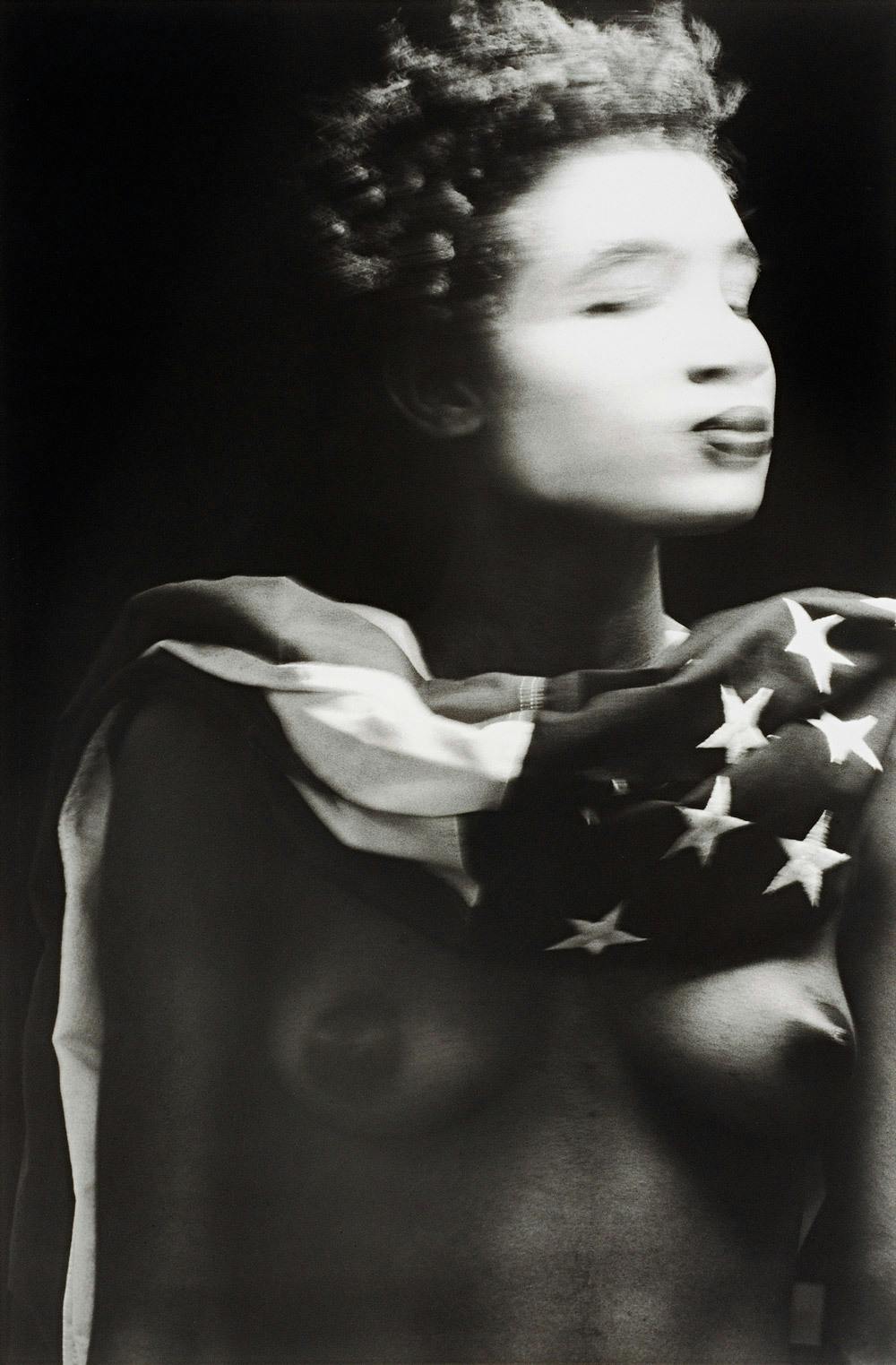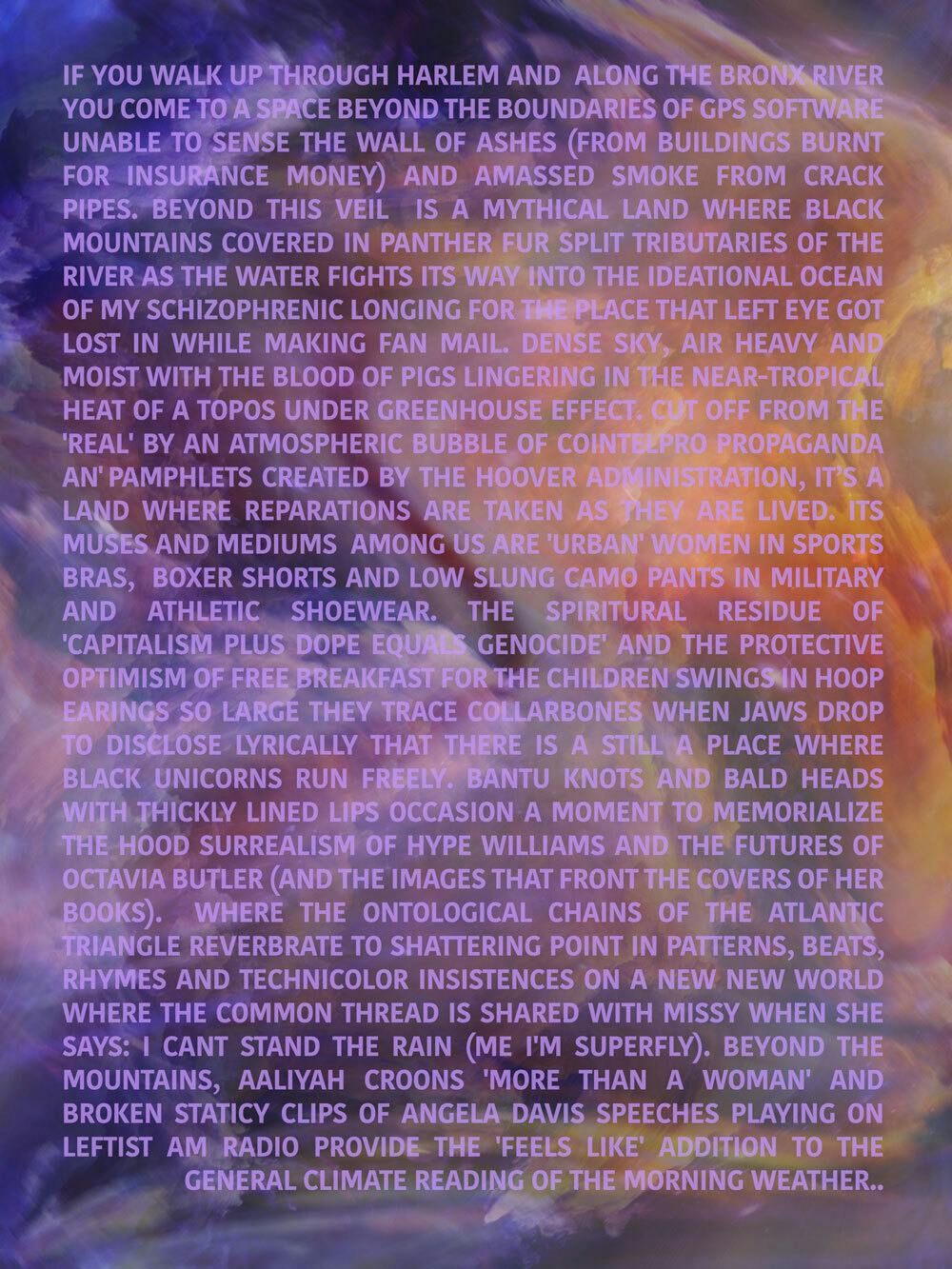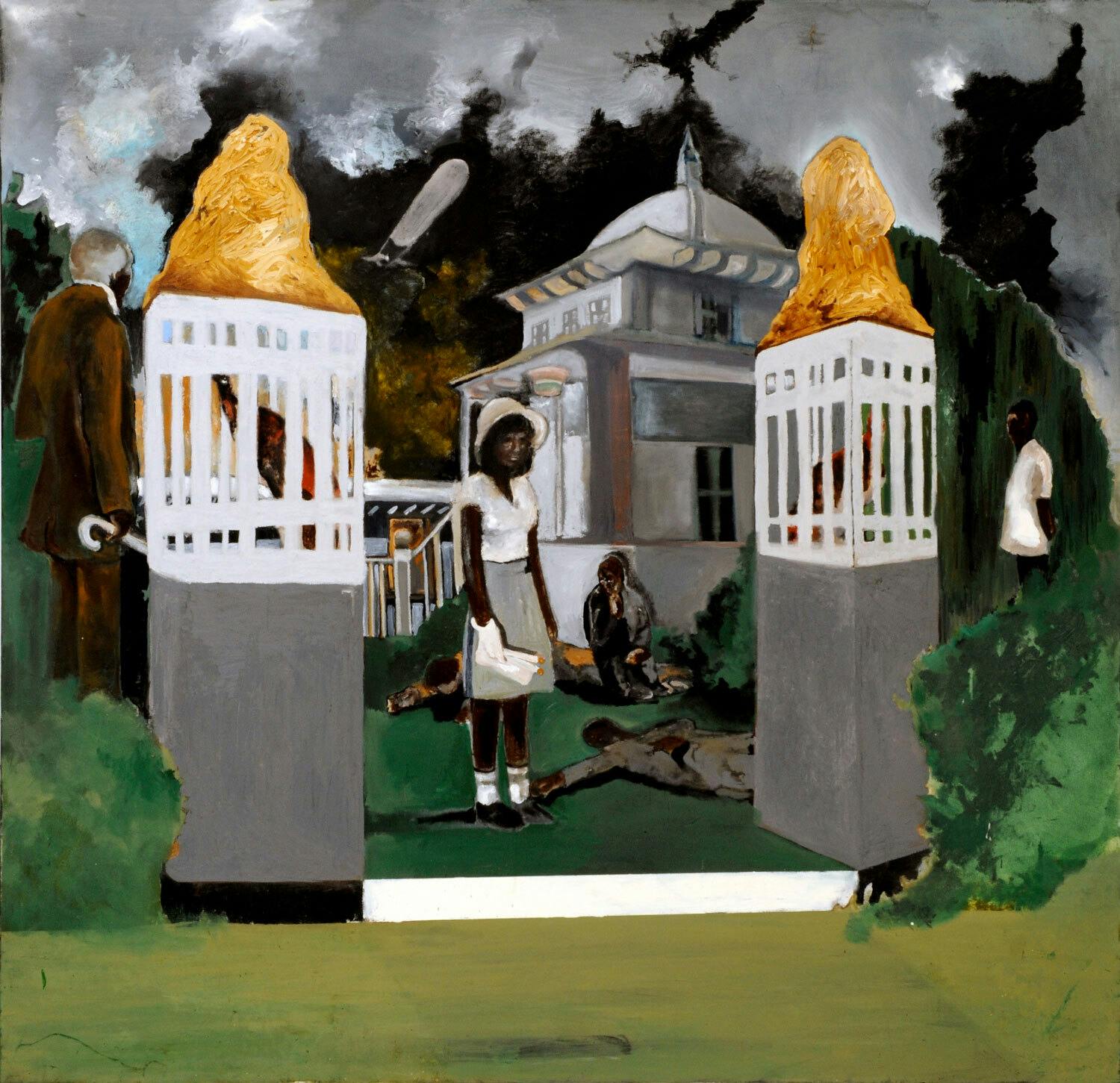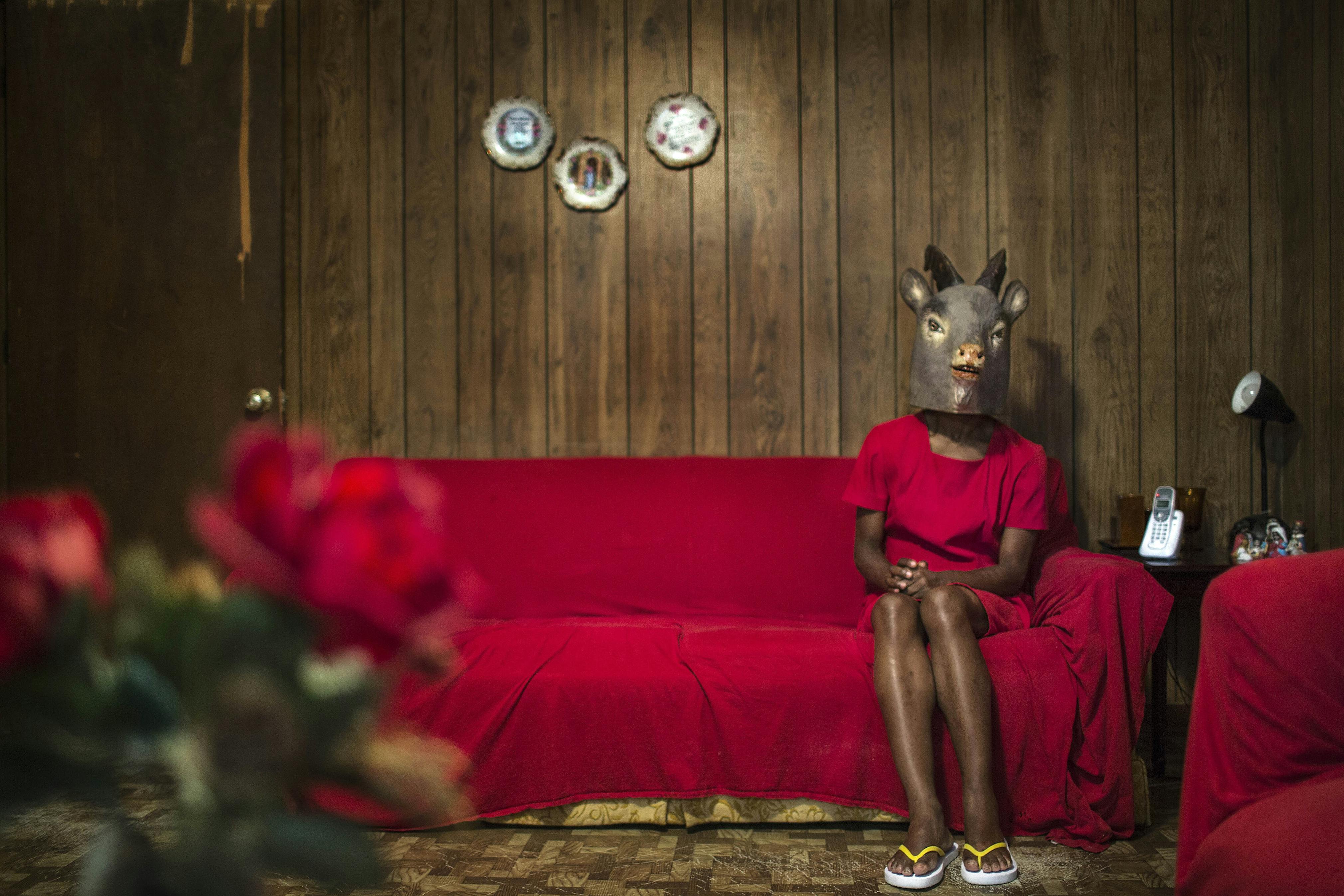Kara Walker
(b. 1969)Kara Walker uses silhouettes to build incisive narratives about power and draw attention to the physical displacement of the Black body, as well as the tensions between white and black, pleasure and danger, and shadow and substance.
Biography
As a child, Kara Walker observed her father, a painter and professor, working in his studio. She notes, “I remember thinking: ‘I want to do that, too,’ and I pretty much decided then and there at age two-and-a-half or three that I was an artist just like Dad.”1
At thirteen, she and her family relocated to Atlanta, where the multicultural environment of her early childhood years in California gave way to an environment with a Confederate Army monument and a Ku Klux Klan historical meeting place.
As an undergraduate at the Atlanta College of Art, Walker found herself questioning her identity as a painter at the same time that she was discouraged from exploring conceptual approaches to artmaking. She discovered the work of Adrian Piper and Lorna Simpson but remained hesitant to explicitly address race and identity in her practice. Just before arriving at graduate school, amid reading the writings of Black feminist critics and studying early American Art, Walker was struck by a nineteenth-century silhouette of a young Black girl. Since that time, she has used silhouettes to build incisive narratives about power and draw attention to the physical displacement of the Black body, as well as the tensions between white and black, pleasure and danger, and shadow and substance.
Walker earned a BFA from the Atlanta College of Art and MFA from the Rhode Island School of Design. She is the recipient of numerous awards, including a John D. and Catherine T. MacArthur Foundation Fellowship (1997); Harvard University Hutchins Center for African and African American Research W.E.B. Du Bois Medal (2017); and American Academy of Arts and Letters Gold Medal for Graphic Art (2022). The Studio Museum has presented her work in exhibitions such as Kara Walker: Excavated from the Black Heart of a Negress (2003); African Queen (2005); and Black: Color, Material, Concept (2015–16).
1) “8 Facts About Kara Walker,” Google Arts & Culture, accessed April 10, 2023, artsandculture.google.com/story/8-facts-about-kara-walker/VgVx1mWZi_6UYg?hl=en.
Exhibitions and Events
Kara Walker
(b. 1969)Kara Walker uses silhouettes to build incisive narratives about power and draw attention to the physical displacement of the Black body, as well as the tensions between white and black, pleasure and danger, and shadow and substance.
An Unpeopled Land in Uncharted Waters, 2010
Biography
As a child, Kara Walker observed her father, a painter and professor, working in his studio. She notes, “I remember thinking: ‘I want to do that, too,’ and I pretty much decided then and there at age two-and-a-half or three that I was an artist just like Dad.”1
At thirteen, she and her family relocated to Atlanta, where the multicultural environment of her early childhood years in California gave way to an environment with a Confederate Army monument and a Ku Klux Klan historical meeting place.
As an undergraduate at the Atlanta College of Art, Walker found herself questioning her identity as a painter at the same time that she was discouraged from exploring conceptual approaches to artmaking. She discovered the work of Adrian Piper and Lorna Simpson but remained hesitant to explicitly address race and identity in her practice. Just before arriving at graduate school, amid reading the writings of Black feminist critics and studying early American Art, Walker was struck by a nineteenth-century silhouette of a young Black girl. Since that time, she has used silhouettes to build incisive narratives about power and draw attention to the physical displacement of the Black body, as well as the tensions between white and black, pleasure and danger, and shadow and substance.
Walker earned a BFA from the Atlanta College of Art and MFA from the Rhode Island School of Design. She is the recipient of numerous awards, including a John D. and Catherine T. MacArthur Foundation Fellowship (1997); Harvard University Hutchins Center for African and African American Research W.E.B. Du Bois Medal (2017); and American Academy of Arts and Letters Gold Medal for Graphic Art (2022). The Studio Museum has presented her work in exhibitions such as Kara Walker: Excavated from the Black Heart of a Negress (2003); African Queen (2005); and Black: Color, Material, Concept (2015–16).
1) “8 Facts About Kara Walker,” Google Arts & Culture, accessed April 10, 2023, artsandculture.google.com/story/8-facts-about-kara-walker/VgVx1mWZi_6UYg?hl=en.








